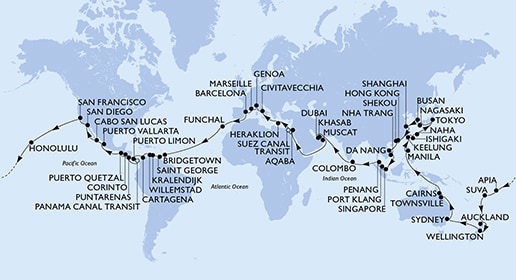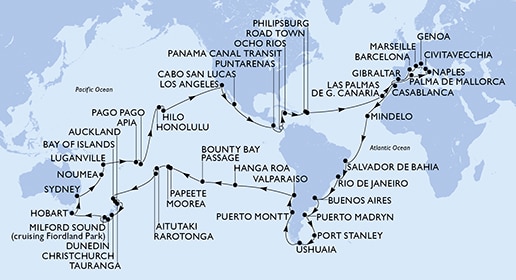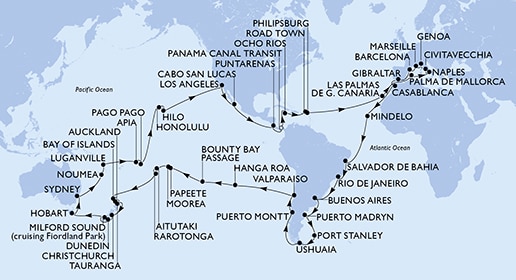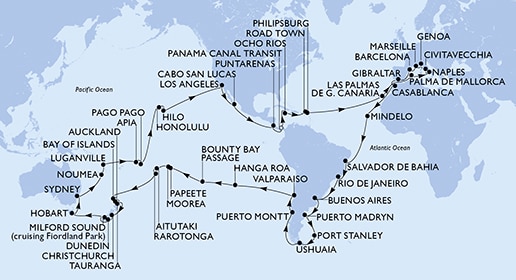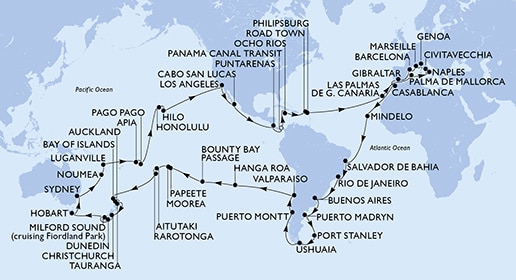
Port Cristóbal (Panama Canal)
Cristóbal, located at the Caribbean entrance of the Panama Canal, is a historic port city that plays a vital role in global trade and Panama’s maritime legacy. This bustling port, part of the larger Colón area, serves as a gateway for ships transiting the canal and is a common stop for cruise ships. While the port itself focuses on commerce, it offers visitors access to fascinating attractions tied to Panama's history and natural beauty.
Nearby, the Gatun Locks provide a firsthand look at the engineering marvel of the Panama Canal, where visitors can watch massive vessels traverse the locks. History enthusiasts can explore Fort San Lorenzo, a UNESCO World Heritage Site showcasing colonial-era fortifications overlooking the Caribbean. Additionally, the Colón Free Trade Zone offers a massive duty-free shopping experience. For those seeking nature, the Chagres National Park is a lush rainforest nearby, perfect for eco-tours and wildlife exploration. Cristóbal serves as an ideal starting point for discovering the diverse cultural, historical, and natural wonders of Panama’s Caribbean coast.
History
Cristóbal, located at the Atlantic entrance of the Panama Canal in the city of Colón, Panama, has been a vital hub for global trade since its establishment in the late 19th century. Originally developed to support the Panama Railroad, Cristóbal became critical during the construction of the Panama Canal in the early 20th century, serving as a base for workers, equipment, and materials. Named after Christopher Columbus (Cristóbal Colón in Spanish), the port grew into one of the busiest on the Atlantic side of the canal, facilitating the transit of goods and passengers between the Americas and the rest of the world. Its role in global commerce was further bolstered by the creation of the Colón Free Zone, one of the largest duty-free zones globally, making it a key economic center.
In addition to its industrial significance, Cristóbal holds cultural and historical importance. It is a testament to the monumental efforts involved in constructing the canal, showcasing the contributions of laborers from diverse backgrounds. Visitors to Cristóbal can explore the historical legacy of the canal, as well as nearby attractions such as the San Lorenzo Fort, a UNESCO World Heritage Site, and the region's lush tropical landscapes. Despite being largely industrial, Cristóbal is a gateway to the vibrant Afro-Caribbean culture of the Colón Province, offering a blend of history, commerce, and cultural richness.





